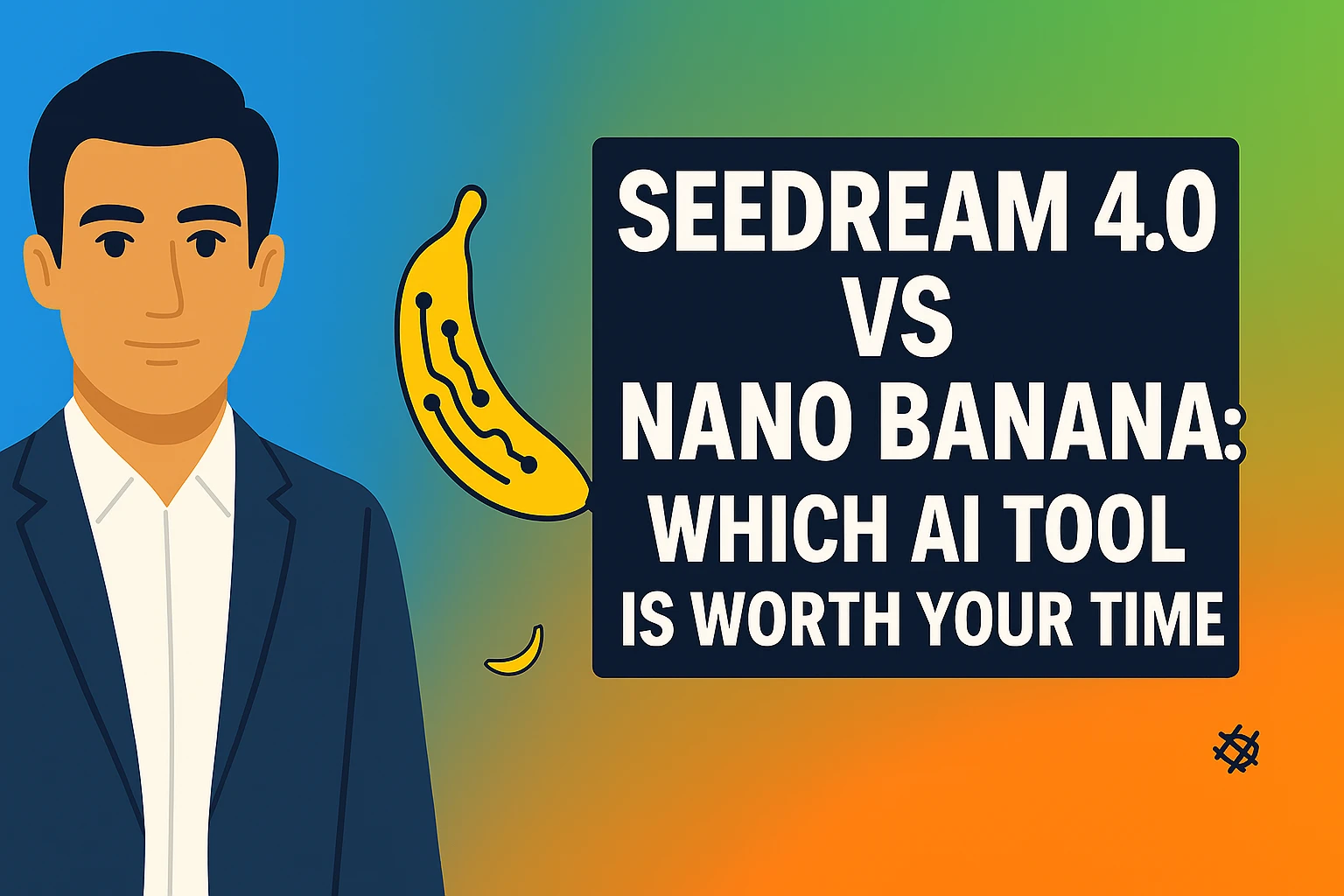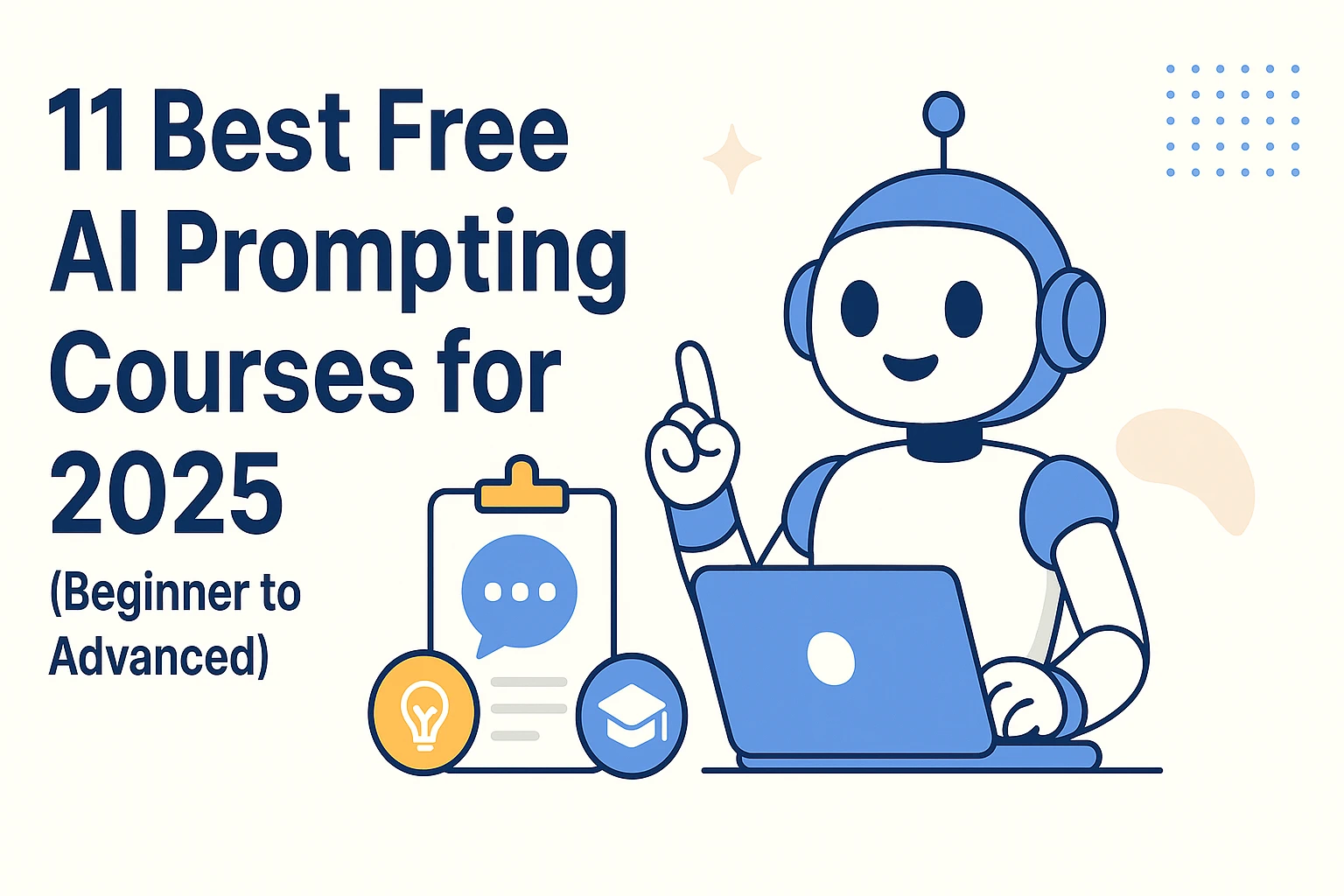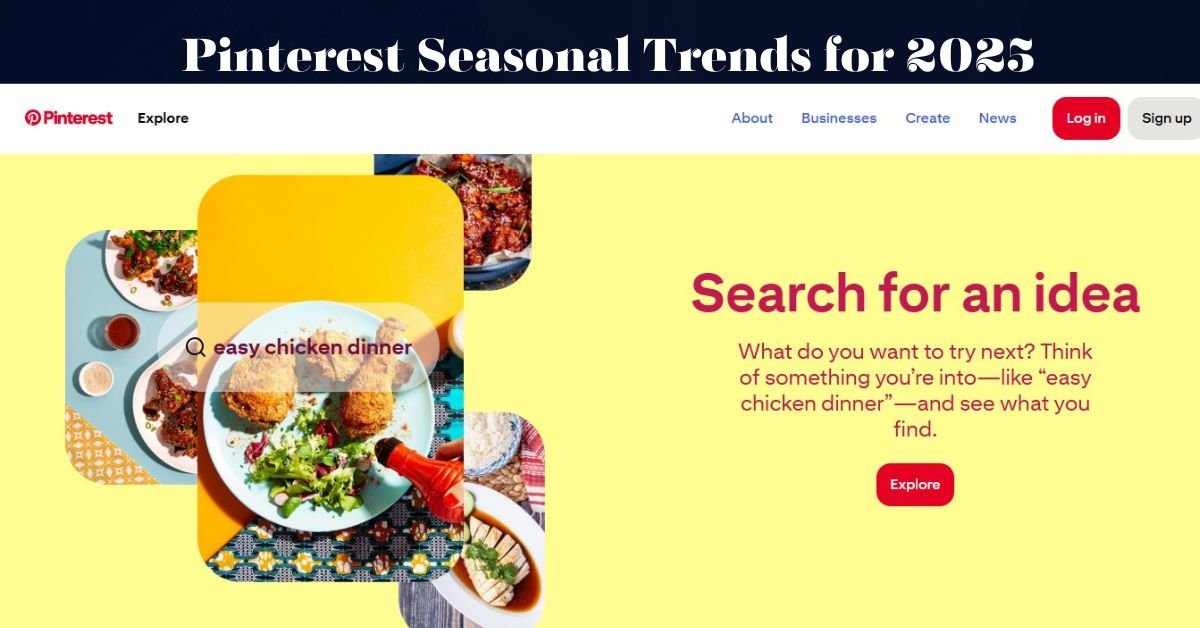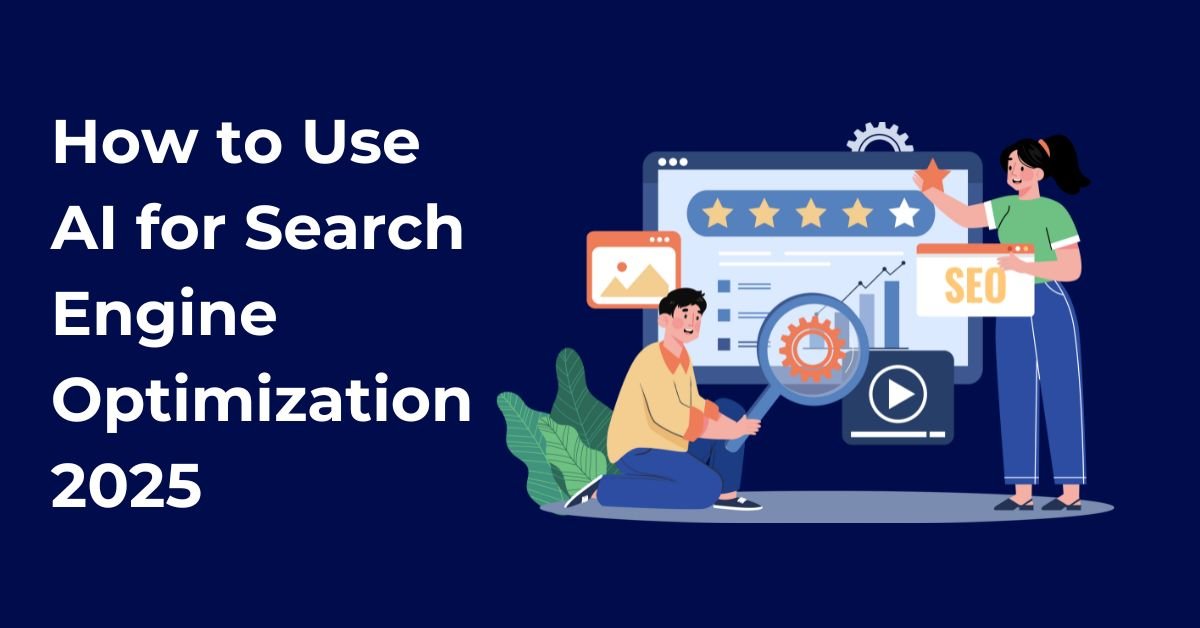I’ve been trying out the newest AI graphic design tools and I’m eager to share what I’ve found. The world of graphic design is changing fast. It’s important for both pros and hobbyists to keep up with the latest tech.
The use of AI in graphic design has changed how we make and edit pictures. With the best AI design tools 2025 offers, designers can do repetitive tasks faster. They can also try new ideas and make amazing pictures easily.
In this article, we’ll dive into the top graphic design AI software for 2025. This guide is for both experienced designers and beginners. It will show you how to use AI to boost your creativity.
Key Takeaways
- Discover the top AI tools for graphic design in 2025
- Learn how AI is transforming the graphic design industry
- Explore the key features and benefits of the best AI design tools
- Get insights into the latest trends and innovations in AI-powered graphic design
- Find out how to choose the right AI tool for your graphic design needs
The Evolution of AI in Graphic Design
The graphic design world is on the verge of a big change, thanks to AI. AI design software is more than just a tool. It’s a key to unlocking new ideas and ways of working.
How AI is Transforming the Design Industry
AI is changing the design world by making routine tasks easier and boosting creativity. It helps designers by doing things like editing images and suggesting design ideas.
But what does this mean for designers? It lets them dive deeper into creative work. They can explore new ideas and push the limits of graphic design.
Benefits of Incorporating AI into Your Design Workflow
Adding AI to your design work has many benefits. It makes things more efficient, accurate, and creative. Here are the main advantages:
| Benefit | Description |
|---|---|
| Increased Efficiency | AI automates repetitive tasks, freeing up time for creative work |
| Improved Accuracy | AI minimizes human error, ensuring high-quality output |
| Enhanced Creativity | AI tools provide new ways to explore and express creative ideas |
As we see the graphic design evolution unfold, the future looks bright. With AI, the possibilities are endless. Designers are just starting to discover what’s possible.
How to Evaluate AI Graphic Design Tools
AI is changing graphic design fast. Finding the best tools needs careful thought. You must look at several important factors that affect your work.
Key Features to Look For
When checking out AI graphic design tools, there are key features to look for. These include:
- Advanced image editing capabilities
- AI-driven design suggestions
- Collaboration tools
- Customization options
- Integration with existing design software
Pricing Considerations
Pricing is another critical factor when evaluating AI graphic design tools. Think about the cost of subscription plans, any extra fees for premium features, and the value you get.
Pricing models vary a lot. Some tools have tiered plans, while others offer custom pricing for businesses.
Learning Curve and Accessibility
The learning curve and accessibility of an AI graphic design tool matter a lot. Look for tools with easy-to-use interfaces, good tutorials, and helpful customer support.

9 Best AI Tools For Graphic Design in 2025
In 2025, the top AI tools for graphic design are leading the way with their advanced features. These tools are changing the game with their capabilities. It’s important to know how we picked them.
Selection Criteria and Methodology
We looked at several key factors to choose the best AI tools. Here’s what we considered:
- Feature Set: The range and quality of features each tool offers.
- Ease of Use: How easy and accessible each tool is for designers.
- Innovation: Each tool’s ability to innovate in graphic design.
- Integration: How well each tool fits into existing design workflows.
Overview of Top Contenders
The top 9 AI tools for graphic design in 2025 are diverse and each has its own strengths. Some are great at AI art generation, while others excel in editing or workflow efficiency. Let’s take a closer look at what makes them special:
1. Adobe Firefly
I’ve been trying out Adobe Firefly, and I’m eager to share what I’ve learned. This AI design tool is changing the game in graphic design. It uses advanced AI to make the design process easier.
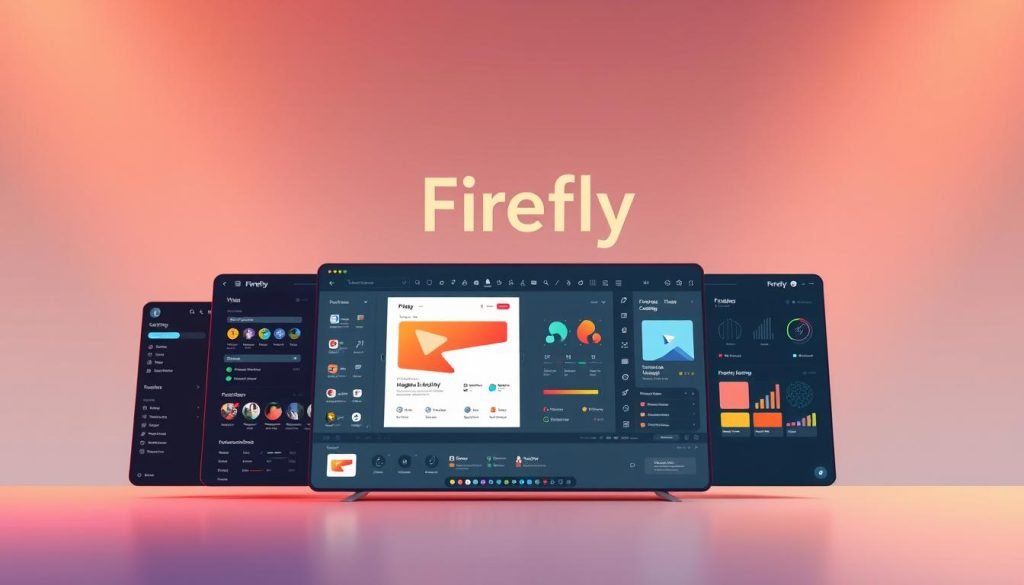
Overview and Core Capabilities
Adobe Firefly is all about helping graphic designers. It has AI features that make designing better. You can get high-quality designs, automate tasks, and edit easily.
Key Features
- AI-generated design elements
- Advanced image editing capabilities
- Seamless integration with Adobe Creative Cloud
Pros
- Enhanced creativity: Firefly’s AI opens up new creative doors.
- Time-saving: It automates tasks, so you can focus on creative decisions.
Cons
- Learning curve: It’s easy to use, but mastering it takes time.
- Dependence on Adobe ecosystem: It works best in the Adobe Creative Cloud.
Step-by-Step Guide to Using Adobe Firefly
Now, let’s explore how to use Adobe Firefly.
Setting Up Your Project
To begin, just open Adobe Firefly and pick your project type. You can choose from templates or start fresh.
Next, use the AI tools to create design elements. Tell Firefly what you like, and it will show you options to pick from.
Refining and Exporting Your Work
After you’re happy with your design, refine it with Firefly’s editing tools. Then, export it in your preferred format. It’s ready for your projects.
2. Midjourney
Midjourney is a top AI art generator. It gives designers a powerful tool for creative work. This tool is changing graphic design by making AI art better than ever.
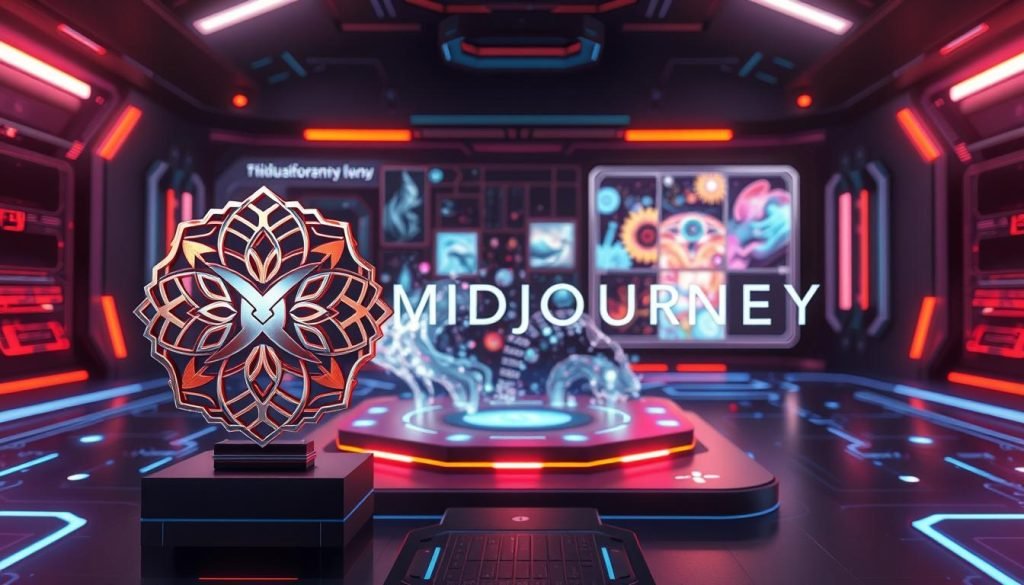
Overview and Core Capabilities
Midjourney uses AI to make high-quality images from text. It can create and change images in new ways. This lets designers make their ideas come to life.
Key Features
- Advanced Image Synthesis: Midjourney can make detailed images from text prompts. It offers many creative options.
- Customization Options: Users can adjust settings to fit their design needs.
- User-Friendly Interface: Midjourney is easy to use, even for those new to tech.
Pros
- High-Quality Outputs: Midjourney makes high-resolution images that look professional.
- Versatility: It can be used for many things, like concept art and marketing materials.
Cons
- Learning Curve: While easy to use, getting the most out of Midjourney takes practice.
- Dependence on Text Prompts: The quality of the output depends a lot on the text prompts.
Step-by-Step Guide to Using Midjourney
To start with Midjourney, follow these steps:
Setting Up Your Project
First, make an account on the Midjourney platform. Then, set up your project with the right settings. Choose the output resolution and other important options.
Creating AI-Generated Designs
After setting up, start making designs by typing in your text prompts. Try different prompts to get the look you want.
Refining and Exporting Your Work
Once you have your designs, use Midjourney’s tools to make them better. When you’re happy, export your work in the format you need for your projects.
3. DALL-E 3
DALL-E3 is a top AI graphic design tool that offers amazing creative options. It’s known for making high-quality images from text descriptions.
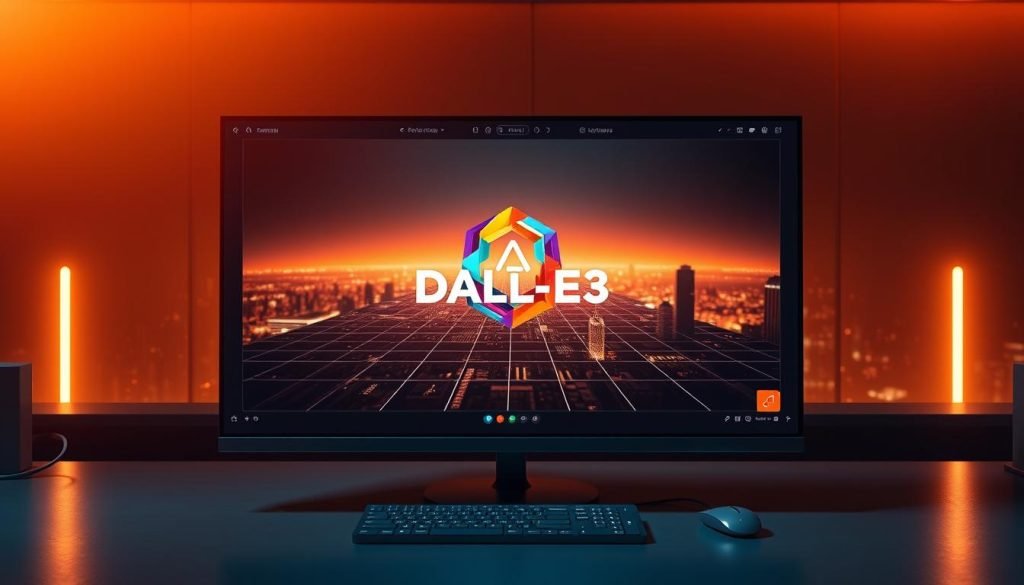
Overview and Core Capabilities
DALL-E3 is the newest in the DALL-E series. It has better features and works faster. It uses a smart AI model to turn text into images.
Key Features
- Advanced image generation from text prompts
- High-resolution output
- Customizable styles and themes
Pros
- High-quality output: DALL-E3 makes images that look like they were made by humans.
- Versatility: It’s great for many uses, from art to business designs.
Cons
- Steep learning curve: It takes time to learn how to use it well.
- Resource-intensive: Making high-quality images takes a lot of computer power.
Step-by-Step Guide to Using DALL-E3
Setting Up Your Project
To use DALL-E3, first log in to its web interface or API. Then, start a new project and write your text prompt.
Creating AI-Generated Designs
After setting up your project, enter your text prompt into DALL-E3. It will create an image based on your description. You can tweak the image by changing settings and re-generating it.
Refining and Exporting Your Work
When you like the image, use DALL-E3’s tools to make it better. Then, you can save your design in many formats for different uses.
John Doe, a famous graphic designer, said, “AI tools like DALL-E3 are changing the game.” Many designers agree, using DALL-E3 to explore new graphic design possibilities.
“The future of graphic design is not just about the tools we use, but how we use them to create something new and innovative.”
4. Canva AI
Graphic designers can now tap into new creativity and efficiency with Canva AI. This tool combines artificial intelligence with design, benefiting both pros and hobbyists.

Overview and Core Capabilities
Canva AI makes graphic design easier. It offers AI features that boost productivity and creativity. You get advanced image editing, easy design tools, and a huge template library.
Key Features
- AI-powered image editing
- Automated design suggestions
- Extensive template library
Pros
- Enhanced creativity: Canva AI’s tools spark new ideas.
- User-friendly interface: It’s easy to use, even for beginners.
Cons
- Limited advanced features: It might not have what expert designers need.
- Dependence on AI: Relying too much on AI could limit your creativity.
Step-by-Step Guide to Using Canva AI
Setting Up Your Project
To begin with Canva AI, just log in to your Canva account. Then, pick the AI design tool and select a template or start fresh.
Creating AI-Generated Designs
With Canva AI’s tools, create unique graphics. Just input your design preferences, and let the AI work its magic.
Refining and Exporting Your Work
After you’re happy with your design, tweak it if needed. Then, export it in your favorite format.
5. Runway ML
I’ve been impressed by Runway ML’s ability to simplify complex design tasks. Its intuitive AI interface makes it a standout tool in AI design. It’s known for its innovative use of machine learning in design.
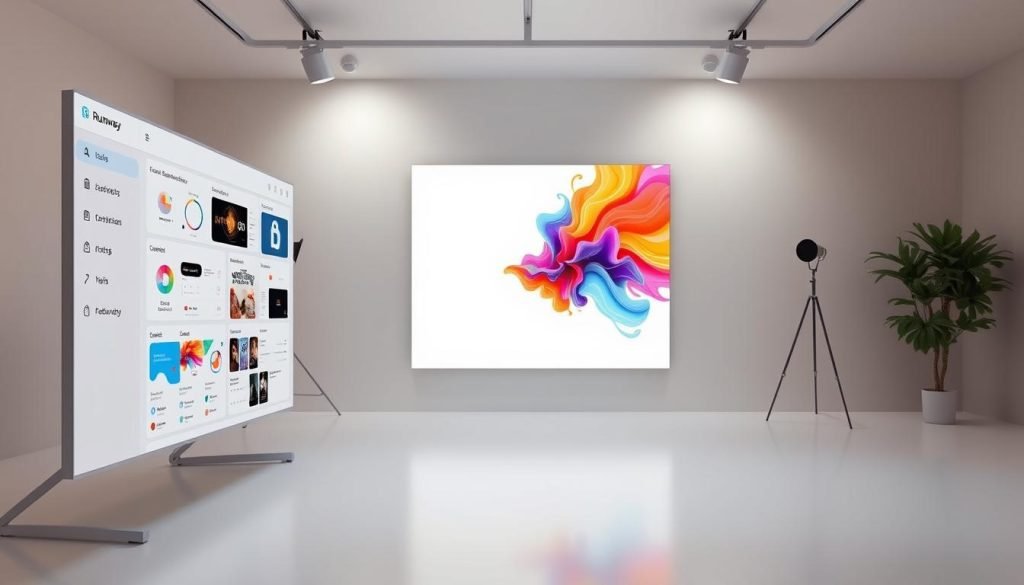
Overview and Core Capabilities
Runway ML is a powerful platform that uses machine learning. It offers a wide range of creative possibilities for designers. It can generate images, videos, and other multimedia content using AI algorithms.
Key Features
- Advanced AI models for content generation
- User-friendly interface for designers
- Integration with various creative workflows
Pros
- Versatility: Runway ML can be used for a variety of design tasks, from image editing to video generation.
- Ease of use: The platform is designed to be accessible to designers without extensive machine learning expertise.
Cons
- Resource-intensive: Running complex AI models can require significant computational resources.
- Limited control: While the AI is powerful, there may be limitations in terms of fine-grained control over the output.
Step-by-Step Guide to Using Runway ML
To get started with Runway ML, follow these steps:
Setting Up Your Project
Begin by creating a new project in Runway ML. Choose the type of content you want to generate, such as an image or video.
Creating AI-Generated Designs
Use the AI models provided by Runway ML to generate your design. You can input your own data or use the pre-loaded models to get started.
Refining and Exporting Your Work
Once you’ve generated your design, refine it as needed using the platform’s editing tools. Finally, export your work in the desired format.
6. Stable Diffusion
Stable Diffusion is changing the graphic design world with its advanced AI. It’s a top AI art generator that’s caught the eye of many designers.
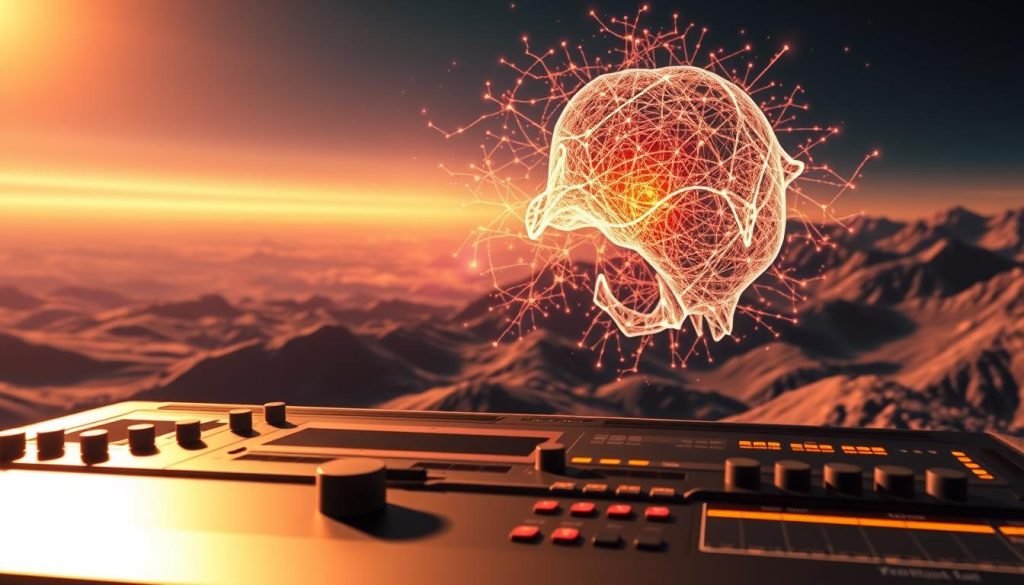
Overview and Core Capabilities
Stable Diffusion is a top graphic design AI tool. It uses smart algorithms to make high-quality images and designs. It can create art, edit images, and make designs from text prompts.
Key Features
- Advanced image generation capabilities
- Text-to-image synthesis
- Image editing and manipulation
Pros
- High-quality output
- User-friendly interface
- Continuous updates with new features
Cons
- Steep learning curve for advanced features
- Resource-intensive
Step-by-Step Guide to Using Stable Diffusion
To start with Stable Diffusion, follow these steps:
Setting Up Your Project
First, create a new project. Choose a template or start from scratch.
Creating AI-Generated Designs
Next, use the text-to-image feature to create designs. Try different settings to get the look you want.
Refining and Exporting Your Work
Then, use the editing tools to refine your designs. Finally, export them in your preferred format.
7. Designify
I’ve been trying out Designify, and I’m excited to share what I’ve found. This AI design tool is making waves in graphic design. It combines AI features with a user-friendly interface.
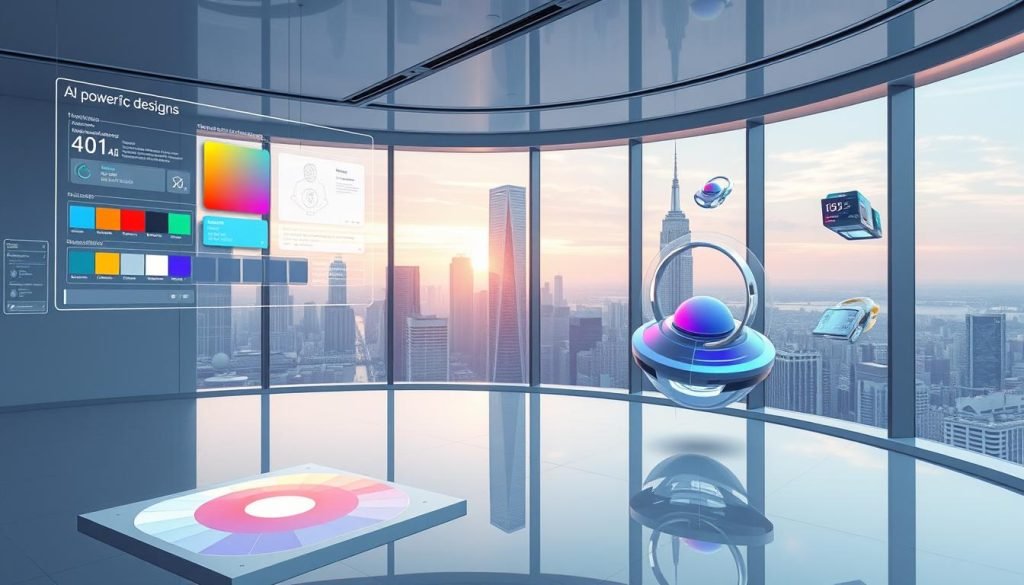
Overview and Core Capabilities
Designify is an AI tool for graphic design. It’s designed for both pros and beginners. It uses AI to create high-quality designs based on what you input.
Step-by-Step Guide to Using Designify
Now, let’s explore how to use Designify.
Setting Up Your Project
To begin with Designify, just sign up on their website. Then, create a new project. You’ll find many templates to choose from or start from scratch.
Creating AI-Generated Designs
After setting up your project, use Designify’s AI to create designs. Just tell it what you want, and it will show you several options.
Once you’ve got your designs, you can tweak them with Designify’s tools. When you’re happy with your design, you can export it in various formats. This makes it ready for different uses.
| Feature | Description | Benefit |
|---|---|---|
| AI Design Generation | Creates designs based on user inputs | Saves time and effort |
| Customizable Templates | Offers pre-designed templates for various projects | Provides a starting point for designs |
| Advanced Editing Tools | Allows for fine-tuning of generated designs | Enhances design quality and customization |
8. Figma AI Assistant
I’ve been trying out Figma AI Assistant, and it’s really changed how I design. It’s a tool that makes graphic design easier and more efficient. Figma AI Assistant adds a lot of value to the design process.
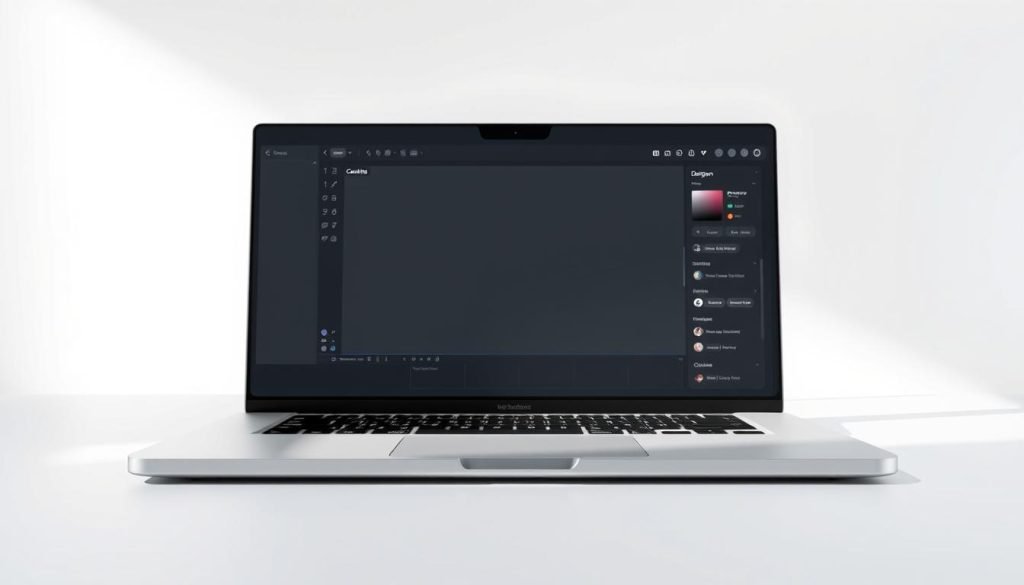
Overview and Core Capabilities
Figma AI Assistant is a new feature in Figma graphic design software. It uses AI to make designing faster and easier. It helps with tasks like creating designs, improving them, and exporting them.
Key Features
- AI-driven design generation
- Automated layout suggestions
- Intelligent design refinement tools
Pros
Figma AI Assistant has many benefits. It makes you more productive and creative. It automates simple tasks, so you can focus on the fun stuff.
Cons
Even though Figma AI Assistant is great, it has some downsides. The quality of AI designs can change based on what you input.
Step-by-Step Guide to Using Figma AI Assistant
To start using Figma AI Assistant, just follow these steps:
Setting Up Your Project
First, make a new project in Figma and find the AI Assistant. It will help you set everything up.
Creating AI-Generated Designs
After setting up, use the AI Assistant to create designs. Try different settings to see what works best for you.
Once you have your designs, tweak them with the refinement tools. Then, export your work in the format you need.
By following these steps, you can use Figma AI Assistant to improve your design work.
9. Leonardo.AI
I’ve been checking out Leonardo.AI, and I’m excited to share what I found. It’s one of the top AI design tools for 2025. It has cool features that can make your graphic design projects better.

Overview and Core Capabilities
Leonardo.AI is an AI art generator that makes high-quality images. It can create art from text prompts, translate images, and change styles.
Key Features
- Advanced AI algorithms for generating realistic images
- Customizable styles and effects
- Support for multiple image formats
Pros
- High-quality output that rivals professional designs
- User-friendly interface for both beginners and experts
- Constantly updated with new features and improvements
Cons
- Can be computationally intensive, requiring powerful hardware
- Some users may find the customization options overwhelming
- Dependent on the quality of the input prompts
Step-by-Step Guide to Using Leonardo.AI
Starting with Leonardo.AI is easy. Here’s a step-by-step guide to make your first AI-generated design.
Setting Up Your Project
First, create an account on the Leonardo.AI platform. After logging in, you’ll see a clean interface to start a new project.
Creating AI-Generated Designs
To make a design, just type in what you want your image to be. You can also upload an image for reference. Leonardo.AI’s AI will then make a unique image for you.
Refining and Exporting Your Work
After making your design, you can tweak it. Adjust style and color palette to your liking. Then, export your image in your preferred format.
Wrap-Up
AI is changing the design world in big ways. Tools like Adobe Firefly and Leonardo.AI offer special abilities to make your work better. They help you design faster, think creatively, and create amazing visuals.
When picking an AI tool, think about what you need. Consider your projects, budget, and skill level. The right tool can open up new possibilities and keep you ahead.
The future of design is linked to AI. As AI gets better, we’ll see more cool uses in design. By keeping up with AI tools, you’ll be ready to succeed in this fast-changing field.
FAQ
What are the best AI tools for graphic design in 2025?
Top AI tools for graphic design in 2025 include Adobe Firefly, Midjourney, and DALL-E3. Canva AI, Runway ML, and Stable Diffusion are also great. Designify, Figma AI Assistant, and Leonardo.AI round out the list.
How do I choose the right AI graphic design tool for my needs?
To pick the right AI tool, look at key features, pricing, and how easy it is to learn. Check if it fits your design needs. Consider the tool’s interface and support to make sure it’s right for you.
What is the difference between AI-generated designs and traditional graphic design?
AI designs use algorithms to create visuals, while traditional design relies on human creativity. AI designs can save time and offer new ideas. But, they might lack the emotional depth of human-made designs.
Can I use AI graphic design tools without prior design experience?
Yes, many AI tools are easy to use, even for beginners. Canva AI and Figma AI Assistant have simple interfaces. They guide you in creating professional designs.
How do AI graphic design tools impact the role of human designers?
AI tools help designers by automating tasks and offering ideas. They make workflows smoother. But, human designers add creativity, empathy, and strategy. They’re key for making important creative decisions.
Are AI graphic design tools compatible with my existing design software?
Many AI tools work well with popular software like Adobe Creative Cloud and Figma. Check if the tool supports your software and file formats for smooth integration.
Can I customize AI-generated designs to fit my brand’s style?
Yes, most AI tools let you customize designs to match your brand. You can change colors, fonts, and layout. This ensures the design fits your brand perfectly.
How do I ensure the AI graphic design tool I choose is secure and reliable?
Look for strong security features like encryption and secure login. Also, check the tool’s reputation, user feedback, and support. This ensures it’s safe and reliable to use.

